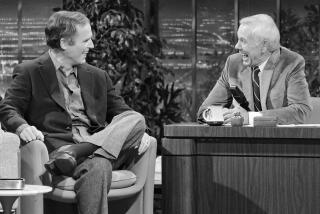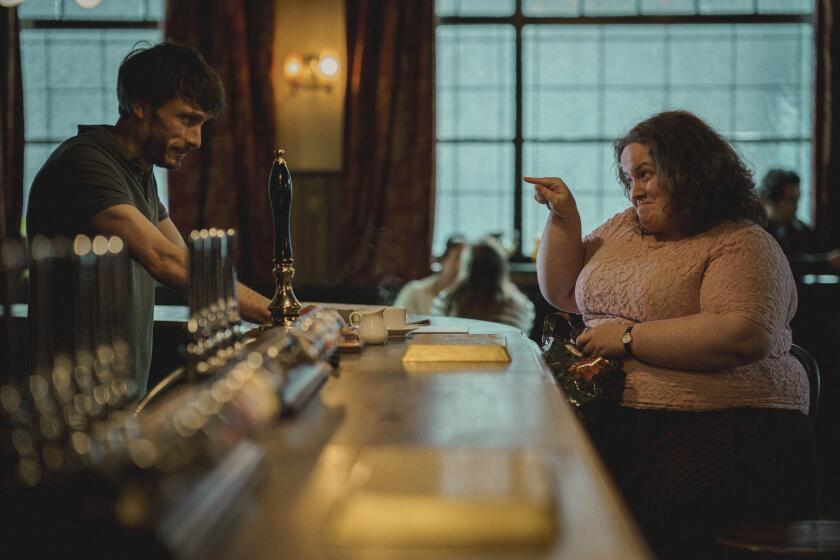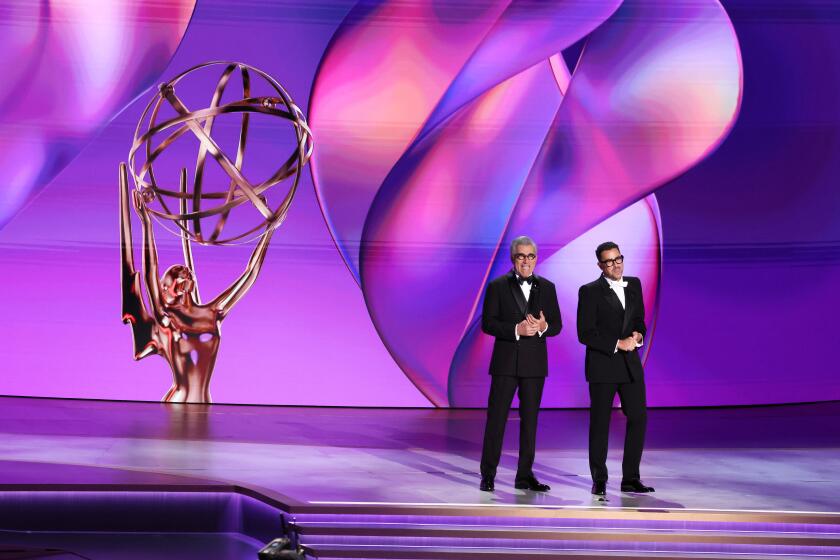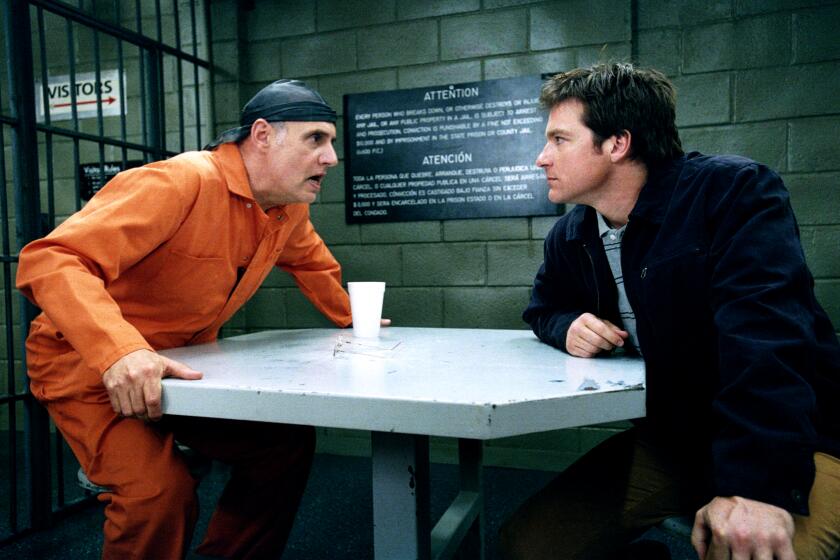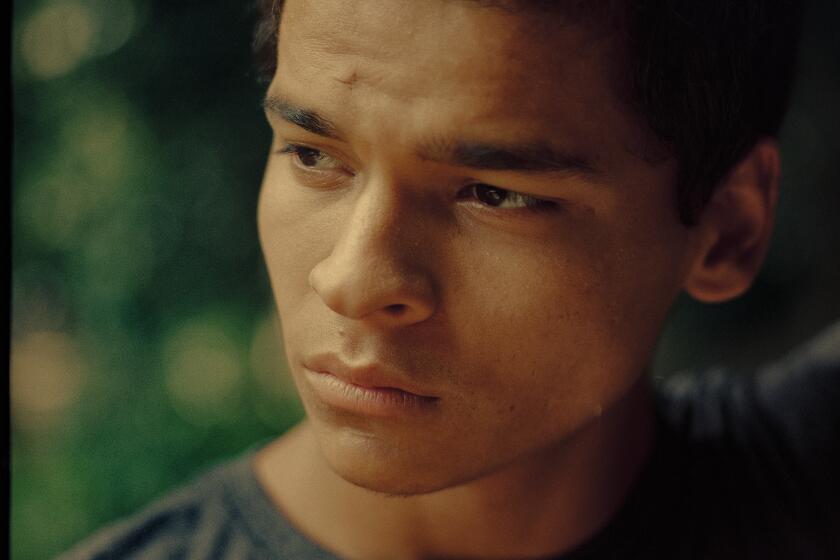Restoring Hollywood luster to Silver Lake soundstages
Silent slapstick filmmaker Mack Sennett moved to Los Angeles in 1913, setting up shop in what is now Echo Park, and began to make short movies starring an upstart comedian named Charlie Chaplin.
Three years later, he built a set of soundstages to make movies with his movie star girlfriend, Mabel Normand.
Now those Silver Lake soundstages, which became part of the Mack Sennett Studios, are getting a face-lift under new owners.
PHOTOS: Hollywood Backlot moments
Jesse Rogg, a Grammy-nominated music producer, bought the production space for about $3.3 million this year from Stephen Collins, a former photographer who owned the property for nearly three decades.
Rogg intends to lease the space for a variety of uses, including TV and commercial production, fashion shows and music videos, capitalizing on his own background in the music business.
The historic building is being renovated and remodeled to restore its classic glamorous Hollywood heritage. The new decor includes vintage leather sofas, velvet curtains, and rope and mirrors found in the basement.
“It was begging to be reinvigorated. I am trying to bring it back to its glory because it is this beautiful, historic place,” Rogg said.
Mack Sennett was at times known as the “King of Comedy” in early Hollywood. He worked with many actors, including Gloria Swanson and Bing Crosby. Sennett in 1914 formed the Keystone Co., which produced “Tillie’s Punctured Romance.” The movie was the first American feature-length comedy.
In 1932 he won an Academy Award for a short called “Wrestling Swordfish,” and in 1937 he received an Academy Honorary Award, which commemorates achievements in the movie industry not covered by existing Academy Awards. However, the Great Depression hit his business hard and he went into bankruptcy in 1933 after selling the property he bought to produce films.
PHOTOS: New owner of Mack Sennett Studios
Although the majority of the property he owned was bought by Public Storage, the original soundstages were preserved and continued to be used under different owners.
To pay homage to the studio’s past, Rogg hired a furniture designer to build furniture and design pieces of lighting out of original materials found in the building.
“I spent time doing an archaeological dig in the basements to find old pieces,” said Christopher Kreiling, the furniture designer. “For a city like Los Angeles, where everything is so disposable, it’s important to use antique goods and preserve and save them.”
Rogg’s Mack Sennett Studios, which officially reopens June 8, is currently renting out its spaces. Stage 1 is 5,000 square feet and Stage 2 is 2,000 square feet. Both stages come with renovated bathrooms, dressing and hair rooms, kitchens and lounge areas.
A few music videos have been filmed using the studios since Rogg took over. A video with Robin Thicke featuring Pharrell Williams and another music video with Miguel and Kendrick Lamar have filmed recently.
“So far we’ve been doing a lot of music videos, but that’s not necessarily the focus,” Rogg said. “I want to cater to corporate clients and local people.”
ON LOCATION: Where the cameras roll
Before Rogg bought the space, No Doubt, Celine Dion and many other artists made music videos using the stages. Commercials have filmed in the studios too, Rogg said. Lexus, the car manufacturer owned and operated by Toyota, is set to film a commercial in the studios this week.
Mack Sennett Studios provides backdrops, risers, flats and construction for projects. Rogg, who wouldn’t disclose rental prices, said he wants to work with a variety of clients as well as support local artists and community projects in order to create the “ultimate creative hub for everyone.”
Said Rogg: “We’re a studio for artists by artists.”
Rogg, nominated for a Grammy for his production work in 2008 for best dance recording for the song “Black and Gold,” continues to produce music. He grew up in Munich, Germany, and can play the saxophone, piano and many other instruments. He moved to Los Angeles in 2000.
The studio’s location, on Bates Avenue in a trendy area of Silver Lake, was a factor in Rogg’s decision to buy the property. The studio can cater to the neighborhood by offering a collaborative space for community events, performances and local artists, Rogg said.
“I saw major corporations take the fun out of it and limit artists,” he said. “I wanted to create a space that would allow creativity.”
More to Read
From the Oscars to the Emmys.
Get the Envelope newsletter for exclusive awards season coverage, behind-the-scenes stories from the Envelope podcast and columnist Glenn Whipp’s must-read analysis.
You may occasionally receive promotional content from the Los Angeles Times.


